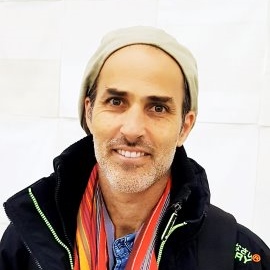
News

Three life lessons from the exodus
RABBI GREG ALEXANDER
Sociologists say that along with fasting on Yom Kippur and circumcising their children, a Pesach seder is one of the few Jewish rituals that most Jews, whatever their affiliation or involvement, continue to do. So, let’s go for about 10 million? That’s a lot of matzah balls!
But back up a bit, and ask who is a Jew? By doing this, you open up a heated debate. Gatekeepers differ in their requirements for all reasons. For Israel, it is one Jewish grandparent. For rabbis, it is your parents’ or grandparents’ ketubah, or a valid conversion. For community organisers, some kind of involvement in a Jewish organisation. For many out there, who don’t need any paperwork, just an inner sense of knowing.
Which makes it remarkable that the exodus itself makes an amazing observation on the number of Jews in the world at the time. After the dramatic 10 plagues, when the Israelites finally left Mitzrayim (Egypt), the Torah tells us that, “the children of Israel went out chamushim from the land of Egypt”. (Ex 13:18) Only it doesn’t explain what the word chamushim actually means. It could come from a root meaning “five”, but it is usually translated as “armed”.
This ambiguity is picked up by our greatest commentator, Rashi, who lived a thousand years ago in France, and actually gives both definitions. (By the way, I love the fact that our ancestors were confident enough in their Judaism to hold two or more competing explanations as equally valid and true). “Chamushim means armed.” Another interpretation is that one in five – chamesh – among the children of Israel came out of Egypt; four-fifths died during the three days of darkness [because they did not want to leave Egypt].”
Let’s look at each of the interpretations that Rashi cites. The first is that they had weapons, and we see that indeed, throughout their 40 years of wandering the desert, they would be called upon to fight battle after battle. The second interpretation is more startling – that only one-fifth of the total number of Jews left Egypt. That is astonishing.
The overwhelming majority did not choose to leave their place of slavery! What is that about? Surely anything was better than slavery. Apparently not. Who can begin to understand what it takes for someone whose family has lived 400 years in one reality to decide to risk change? To step into the unknown. To walk away from everything they ever knew, even if it was grim. According to Rashi, the majority did not.
There is actually a third midrashic explanation that uses the “five” root of chamushim. Rabbi Joshua interpreted it thus: fivefold they came out of Egypt, for five times their number in converts were gathered into the people of Israel upon their departure from Egypt. (Midrash Tanchuma)
This is equally astounding! It appears that a whole mass of Egyptians and others (freed slaves, political asylum seekers, opportunists, Egyptian civil-rights activists, lovers, poets, dreamers?) walked out of Mitzrayim alongside the Israelites.
Were they accepted by Moses and other leaders? It seems they were. In fact, many commentators point out that more than any other mitzvah, the Torah tells us no less than 36 times to love the stranger among us, “because you know the feelings of a stranger, for you were strangers in the land of Egypt”. (Ex 23:9)
If we take these three midrashic readings, we have a powerful teaching for Pesach. First, we walk out into the world armed to face the challenges we will meet. Pesach is a time to assess which of our defences are fitting and serve us, and which are created by fear and lack of correct information. Once we know the difference, we choose to enforce the former, and break down the latter.
In terms of the second reading, we remind ourselves that coming out of slavery is not easy. In fact, in 2019, besides the very real scourge of human trafficking, most of our slavery is internal and self-imposed. And even if the solution is clear and available to us, it doesn’t mean that we pursue it.
It comes from bad habits that settle into their own groove, and before we look around, they are part of the furniture in the rooms of our lives. Whether it’s the food we eat, the relationships we fail to fix, or the addictions we live with, as we clean the chametz from our cupboards, may we clean the chametz of our lives too.
Lastly, in terms of the third reading, may we consider that the notion of who is “in” our community and who is “out” as variable, as it always was. The boundaries of Judaism are permeable to allow for many and varied pathways and interpretations, and to allow for those who choose to enter our community to do so with gracious welcome. This Pesach, may we look beyond our own circle to see who is on the periphery wanting admission, and let us welcome them in. Kol dichfin. Let all who are hungry come and eat.
- Rabbi Greg Alexander is one of the rabbinic team at the Cape Town Progressive Jewish Congregation.




